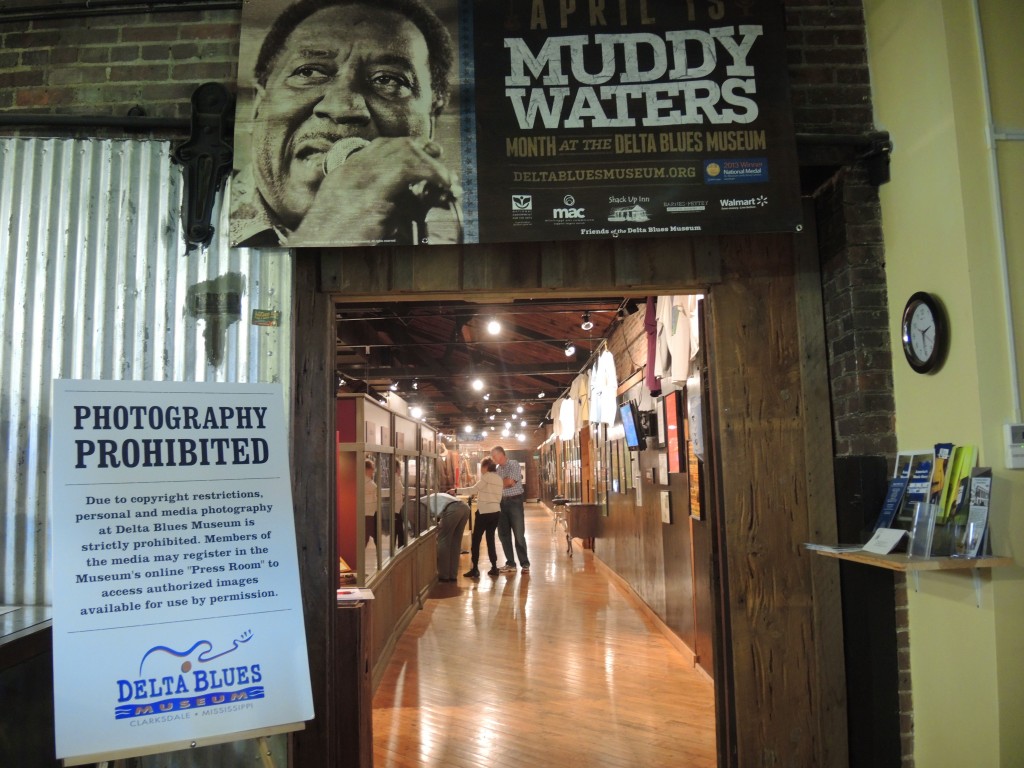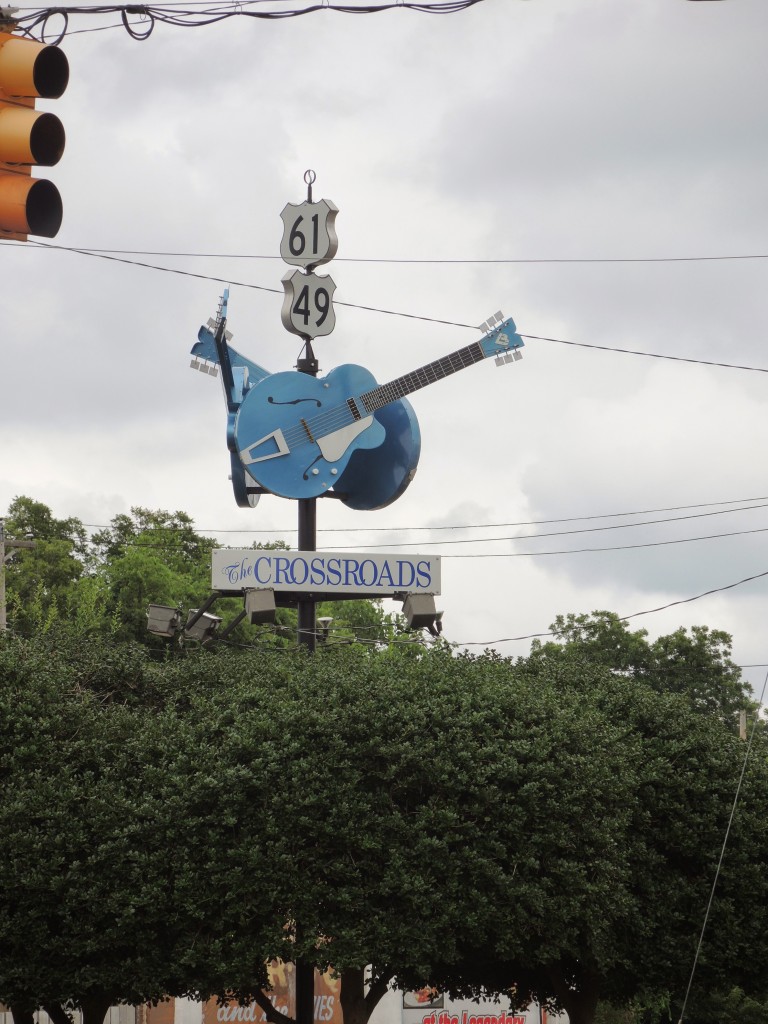Those unfamiliar with a certain legend regarding blues music might be wondering why this photo is at the top of this post.
Clarksdale, Mississippi is home to the famous Crossroads – the intersection of Routes 49 and 61. Those of you who know the legend of Robert Johnson know the significance of the Crossroads. For those of you who don’t, this is the story:
A young Robert Johnson supposedly went down to these crossroads and made a pact with Satan. The devil promised to fulfill his dreams and Johnson traded his eternal soul for his extraordinary talents. Johnson, who died at 27 under unexplained circumstances, found little or no success in his brief life. In the early sixties some of his recordings were reissued on an album called King of the Delta Blues Singers and Johnson gained worldwide posthumous fame. Eric Clapton called him “the most important blues singer that ever lived and Rolling Stone magazine ranked Johnson fifth on their list of the 100 Greatest Guitarists of All-Time in 2003. Of course, the devil saw to it that Johnson never enjoyed his fame.
You can listen to Johnson’s famous Cross Road Blues:.
After passing the Crossroads, I headed for the Delta Blues Museum. The address is 1 Blues Alley (no relation to the Georgetown nightclub). It’s also just across a parking lot from the Ground Zero Blues Club – a must stop in Clarksdale. Unfortunately, no photos are permitted inside the museum so what you will see in the photo folder is quite limited. I had permission to take this picture. 
The main area of the museum is filled with memorabilia mostly in the form of instruments, costumes, posters, and album jackets. Of course, these are placed in context so you get a good sense of the history of the music genre. In many ways it’s presented from a musician’s perspective allowing you to read how one musician influenced the next or made a unique contribution to the evolution of the blues. The museum also had a special temporary exhibit about Muddy Waters.
Waters got his start at the Stovall Cotton Gin and was discovered by the great ethnomusicologist, Alan Lomax, who had come to the Delta to document the Delta Blues for the Library of Congress. Waters eventually decided to move to Chicago and play a decidedly different blues style. One photo that jumped out at me was a picture of him with Johnny Winter who had died in London just days before my arrival in the Delta. I’d encounter them both again before the trip ended. The exhibit also had the log cabin in which he’d lived while he worked at the cotton gin and which is on loan from the Stovalls.
The cabin had once had four rooms but was reduced to a one room structure about 20 feet square in 1987 just before Billy Gibbons from ZZ Top visited it. Gibbons picked up a piece of wood and built the Muddywood guitar which became instrumental in helping raise $1,000,000 for the museum. He has now donated the guitar to the museum and it is prominently displayed behind the shack. Speaking of shacks, I was beginning to feel a bit tired so I decided to head out to find my accommodations for the next two nights, the Shack Up Inn. 
This was my cabin – called Tinth because nine shacks preceded it. I thought of it as my Fiddler on the Roof room (“a fine tin roof with real wooden floors below”). In the weeks following my reservation at the Shack Up Inn, I received several emails warning that the lobby remains open only until 20:00 (though they will say 8:00 pm) and urging special arrangements if you expect a late arrival. They also seemed to emphasize that finding the Inn property and finding your shack can be difficult. This might be so in the dark of night but neither is true in daylight as the property is clearly visible from U S 49.
Being a rather cautious sort, I arrived in daylight, checked in, settled in, rested for a bit, and had an early dinner in their newly opened restaurant. Dinner was a surprisingly sophisticated fish taco which I accompanied with a bottle of Lazy Magnolia Indian Summer Wheat beer that I found quite refreshing.
After dinner I went back into town to see the New Orleans R & B group Heavy Sugar at the Ground Zero Blues Club. Sadly, I forgot my camera so I have only the two exterior pictures of the club that I’d shot during the day. As for the show, it was New Orleans R & B – so lots of Allen Toussaint, Fats Domino, Little Richard, and the like. I enjoyed it. The band was fun (if a bit too loud for my aging ears) but I only stayed for one set and one beer before I took my somewhat bedraggled self back to the Shack Up Inn to try to get some sleep and prepare for tomorrow’s drive through the Delta.
